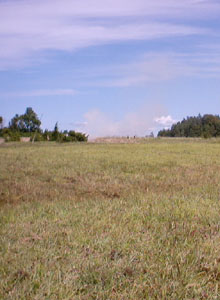 |
Ambassador profile
|
||
| Name: | Elle Roosaluste | |
| Function: | One of the participants of the working camps | |
| Country: | Estonia | |
| E-mail: | elle.roosaluste(at)ut(dot)ee | |
| Tel: | +37 2737 6227 | |
Organisation profile
|
||
| Organisation: | Estonian Seminatural Community Conservation Association | |
| www: | www.pky.ee | |
| E-mail: | pky(at)zbi(dot)ee | |
| Tel: | +37 2742 8363 | |
| Established: | 1990-2005 | |
| Category: | NGO | |
| Number of staff: | There are no permanent staff because it is a non-governmental organisation. There is a managing committee (5 persons) that is elected every 2 years. | |
 |
| Site profile | |||
| Site name: | Puhtu-Laelatu Nature reserve | ||
| Location: | coordinates 23,54580; 58,56665 | ||
| Land area: | 2,700 ha | ||
| Nearest urban settlement: | 2 km | ||
| Natura 2000 ID: |
EE1630, EE6530, EE7210 |
||
| www: | Best information is available on www.matsalu.ee | ||
| Annual visitor count: | No numbers available | ||
| Majority of visitors from: | Estonia and abroad | ||
| Site description: |
The restored coastal meadow was previously a lagoon. Nowadays it is situated between Puhtu broad-leaved forest and alvar meadows. This coastal meadow is the only habitat for Dactylorhiza ruthei in Estonia. |
|
|
| Priority species | |||
| Species code | Latin name | Common / local name | |
| Cypripedium calceolus | Kaunis kuldking | ||
| Angelica palustris | Emaputk | ||
| All habitats (* indicates priority habitats) | ||
| Habitat code | Common / local name | |
| 1210 | Annual vegetation of drift lines | |
| 1230 | Vegetated sea cliffs of the Atlantic and Baltic Coasts | |
| 1630 * | Boreal Baltic coastal meadows | |
| 6280 * | Nordic alvar and precambrian calcareous flatrocks | |
| 6530 * | Fennoscandian wooded meadows | |
| Stakeholder profile | |||||
| Stakeholder activity in the management planning process: | |||||
| Stakeholder group | activity level | ||||
| hi ← → nil | |||||
| Local Government | |||||
| Central Government | |||||
| Scientists | |||||
| Private landowners | |||||
| Green NGOs | |||||
| Private sector | |||||
| Private individuals | |||||
| Foresters | |||||
| Farmers | |||||
| Recreational groups | |||||
| Stakeholder success stories | |
|
Working camp During the last few years the reed on the coast has been cut and burnt every spring in order to open the landscape and help Angelica palustris to grow on coastal meadow. |
|
|
Field works For approximately 15 years our association has organised collective field work on Laelatu wooded meadow to cut trees and bushes and mow hay. |
|
| Photo credit: Toomas Kukk |
| Communication profile | |
| Activities and products for the communication of Natura 2000
|
|
| Events | |
|
|
| Event frequency | |
|
|
| Use of seasonal workers / volunteers | |
|
|
| Kind of work / volunteering opportunities | |
|
|
| Communication literature produced | |
|
|
| Communication target groups | |
|
|
| The organisation has a dedicated communication strategy for Natura 2000 | |
|
|
| Site involved in joint working / networking | |
|
|
| Details of joint working / networking activity | |
|
|
| Key site management issues: | |
|
Our activities are mainly directed towards the improvement of the management of some Natura 2000 habitats in this area. The local nature conservation system is not able to manage the entire area adequately. Working camps (Green days) help to assist in the management of the coastal and wooded meadows. The other benefit of this is that many young people come to these camps and increase their awareness and interest in the nature conservation. Our working camps are very popular and every year they attract approximately 40 participants between the ages of 19 to 60 years old. Working camps are promoted through different ways and the benefits include the following:
|
|
| Integration of Natura 2000 in overall site management: | |
|
Almost the entire site is made up of Natura 2000 sites.
|
|
| Key site management objectives: | |
|
|
|
| Stakeholders targeted as part of management action: | |
|
|
|
| Description of work carried out / methods and methodology: | |
|
Cutting reed on coastal meadows
|
|
| Results of action and activities: | |
|
|
|
| Indication of budget allocation for these tasks: | |
|
EEK 5,000 ( Euros 320)
|
|
| Financial overview | |
| Organisational budget for nature conservation (annual): | |
|
Approximately EEK 200,000 per year (Euros 12,800).
|
|
| Budget reserved for communication: | |
|
There are no special resources for communication.
|
|
| European funding: | |
|
No
|
 |
 |